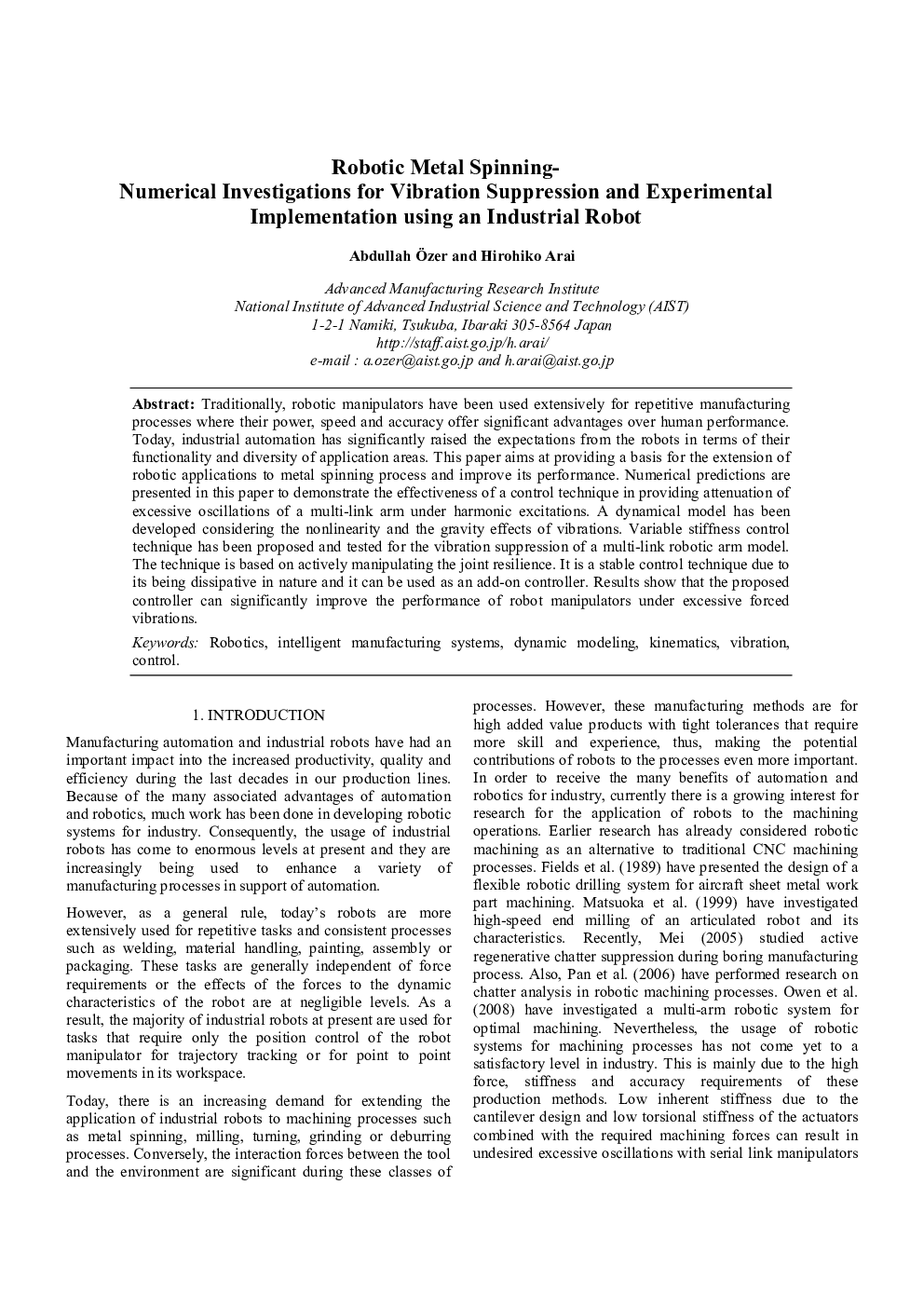| Article ID | Journal | Published Year | Pages | File Type |
|---|---|---|---|---|
| 721359 | IFAC Proceedings Volumes | 2009 | 6 Pages |
Traditionally, robotic manipulators have been used extensively for repetitive manufacturing processes where their power, speed and accuracy offer significant advantages over human performance. Today, industrial automation has significantly raised the expectations from the robots in terms of their functionality and diversity of application areas. This paper aims at providing a basis for the extension of robotic applications to metal spinning process and improve its performance. Numerical predictions are presented in this paper to demonstrate the effectiveness of a control technique in providing attenuation of excessive oscillations of a multi-link arm under harmonic excitations. A dynamical model has been developed considering the nonlinearity and the gravity effects of vibrations. Variable stiffness control technique has been proposed and tested for the vibration suppression of a multi-link robotic arm model. The technique is based on actively manipulating the joint resilience. It is a stable control technique due to its being dissipative in nature and it can be used as an add-on controller. Results show that the proposed controller can significantly improve the performance of robot manipulators under excessive forced vibrations.
